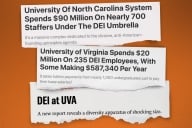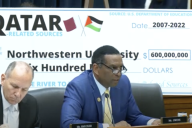You have /5 articles left.
Sign up for a free account or log in.
Only 47 percent of public high schools say they’re doing a “very good” or “excellent” job preparing students for college, according to a new survey from the National Center for Education Statistics, a branch of the U.S. Education Department.
The data, gathered from over 1,600 public schools across all 50 states, also showed that schools in low-income neighborhoods were much less likely to give themselves high marks on college prep than schools in affluent districts.
The results reflect a longstanding discrepancy in college prep between wealthy and under-resourced districts. But they also highlight growing concerns about college readiness for a generation of students whose education was disrupted by the pandemic, and who have experienced higher rates of grade inflation in the years since.
According to the survey, 90 percent of high schools’ graduation requirements aligned with four-year college admission requirements, while only 62 percent reported having some career- or college-readiness graduation requirement. Despite that, more high schools said they did a “good job” or better preparing students for the workforce (86 percent) than for college (77 percent).
Seventy-three percent of schools offer Advanced Placement (AP) or International Baccalaureate (IB) courses, though that breaks down unevenly by geographic region: 83 percent of public schools in the Northeast offer advanced courses, compared to 69 percent of Midwestern schools and 73 percent of Southern ones. Meanwhile, 86 percent of all public schools offer career and technical training courses, and, in this case, the geographic trends are reversed, with fewer high schools in the Northeast offering vocational training.









